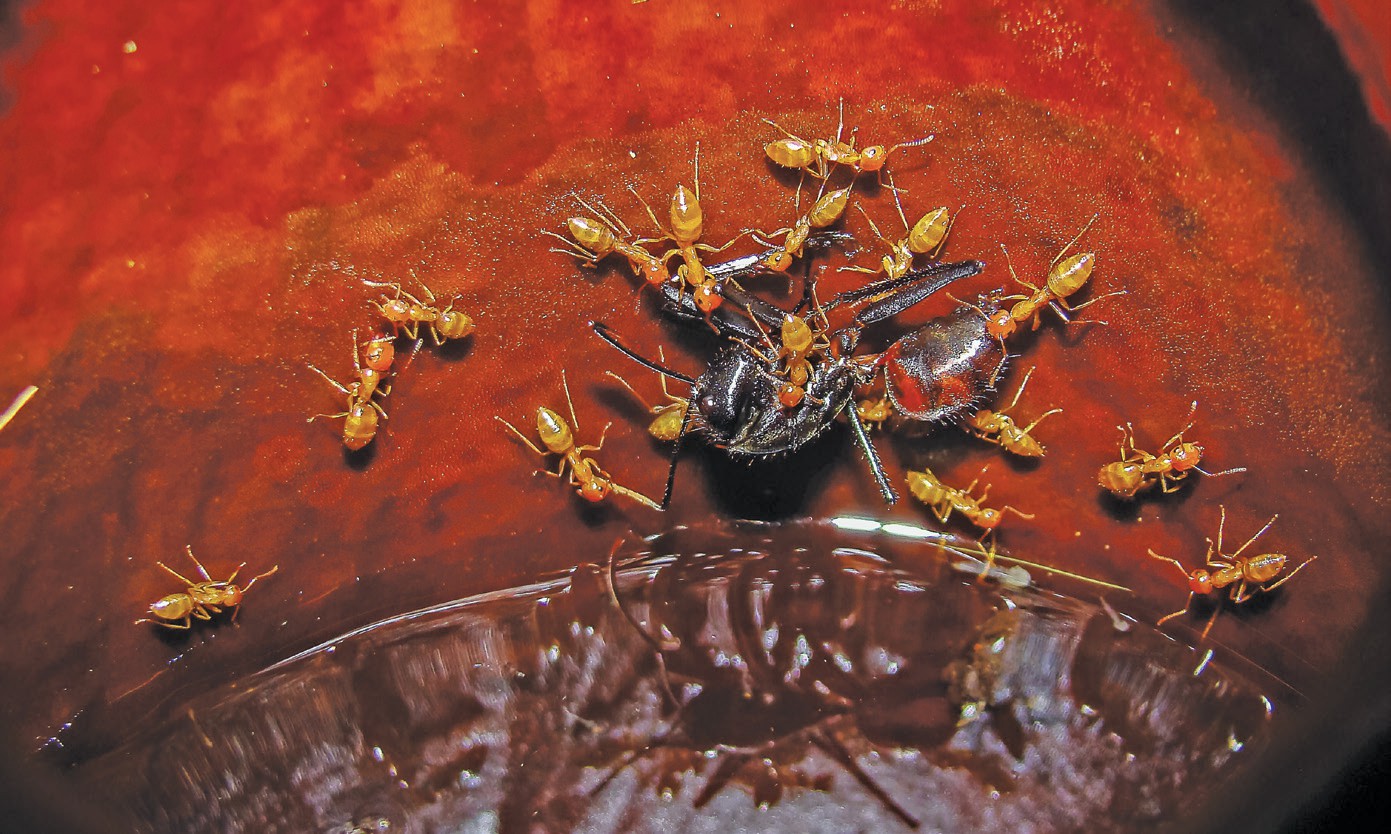
The fanged pitcher plant catches its victims by using fangs — not to eat the prey but to attract them. The sweet nectar on the tip of the fangs attracts insects. The surface of the rim of the pitcher is slippery, and when the insects try to reach the nectar, many slip or fall into the fluid-filled pitcher cup. The insects then drown in the fluid, which contains microorganisms that can degrade their bodies. But this is not the main source of important nutrients for the plant.
The fanged pitcher is unusual among carnivorous plants — it has a mutually beneficial symbiotic relationship with just one species in a group of insects called carpenter ants. The ants live in the hollow tendrils of the plant, and get some of their food from the nectar secreted by the fangs of the plant. In return the ants remove debris and fungi from the rim of the pitcher, ensuring that it remains slippery, and defend the plant against herbivores by attacking them.
Your organisation does not have access to this article.
Sign up today to give your students the edge they need to achieve their best grades with subject expertise
Subscribe




